Assumptions: eco-economic decoupling is possible and social justice and democracy is key for a circularity transition.
Goal: human prosperity and well-being within the biophysical boundaries of the earth.
Means: Technological breakthroughs and social policies that benefit humanity and natural ecosystems.
Example concepts: Natural Capitalism, Cradle to Cradle, The Performance Economy, The Natural Step, The Blue Economy,
Eco-system economy, Regenerative Design.
Proponents: international organizations, large foundations and some governments.
Four visions of a circular economy
Assumptions: eco-economic decoupling is impossible and social justice and democracy is not key for a circularity transition.
Goal: maintain geostrategic resource security in global conditions where widespread resource scarcity and human overpopulation cannot provide for all.
Means: innovative technologies and business models combined with rationalized resource use and migration and population controls.
Example concepts: The tragedy of the Commons, The Population Bomb, Overshoot, Disaster Capitalism, Capitalist Catastrophism.
Proponents: Geostrategic think tanks and state policies.
Assumptions: eco-economic decoupling is possible and social justice and democracy is not key for a circularity transition.
Goal: economic prosperity and development without negative environmental externalities.
Means: economic innovations, new business models and unprecedented breakthroughs in CE technologies.
Example concepts: Industrial Ecology, Reverse Logistics, Biomimicry, Industrial Symbiosis, CleanerProduction, Bio- economy.
Proponents: corporations, some national and city governments, and international organizations.
Assumptions: eco-economic decoupling is impossible and social justice and democracy is key for a circularity transition.
Goal: A world of conviviality and frugal abundance for all, while fairly distributing the biophysical resources of the earth.
Means: Complete reconfiguration of the current socio-political system and a shift away from productivist and anthropocentric worldviews.
Example concepts: Conviviality, Steady-state economics, Permacircular Economy, Degrowth, Social Ecology, Buddhist Economics, Buen Vivir, Ubuntu.
Proponents: social movements, bottom-up circular initiatives, and indigenous movements.
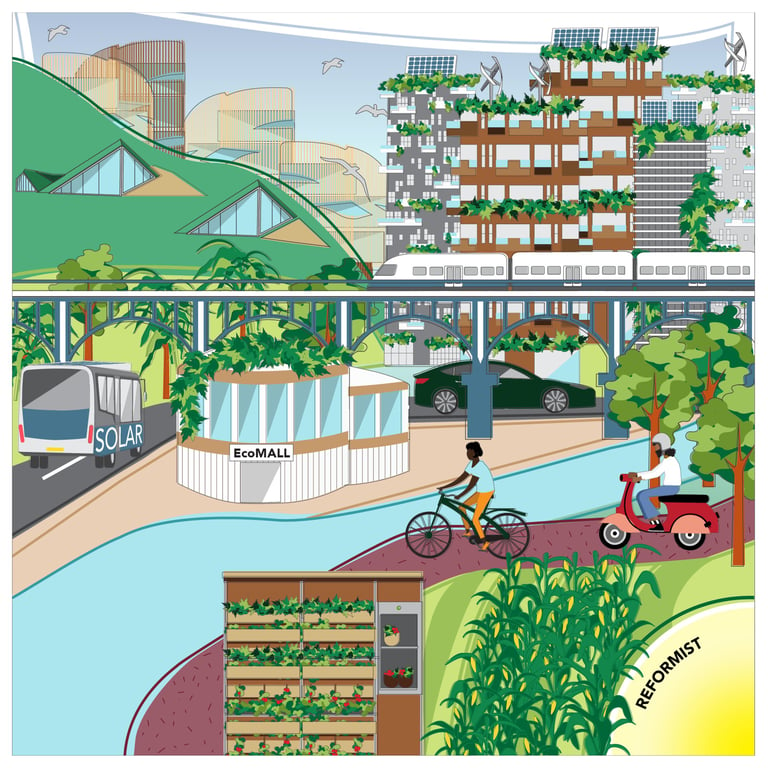

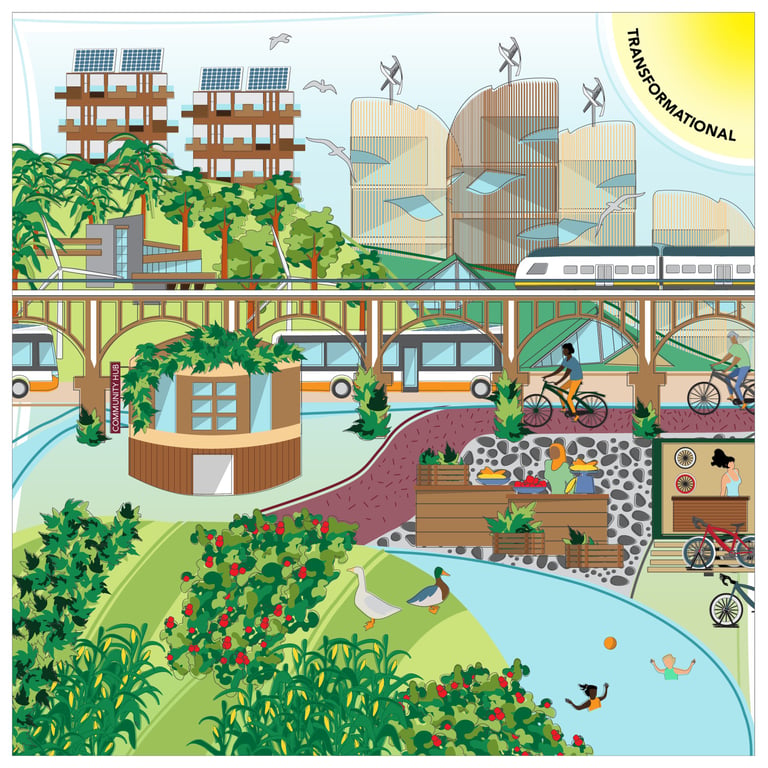


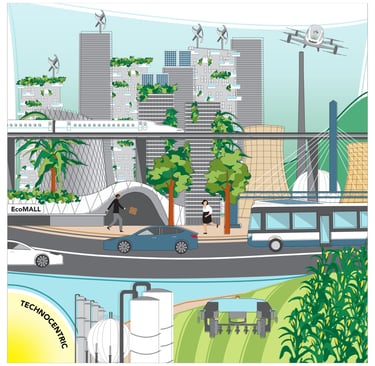
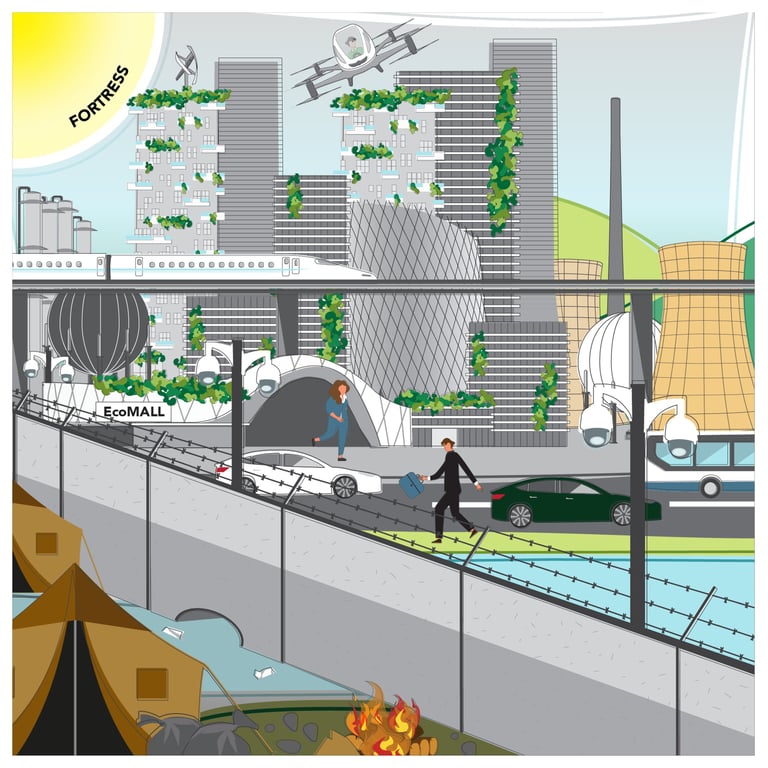

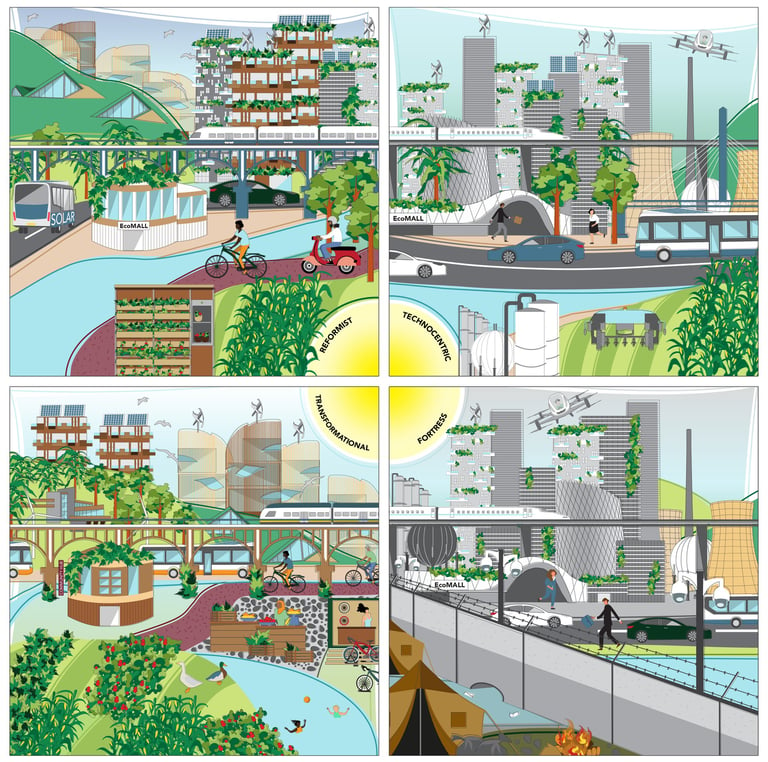

Reformist Circular Society
Transformational Circular Society
Technocentric Circular Society
Fortress Circular Society
Cresting Project by Martin Calisto Friant (PhD)
Visual Research Studio - Participatory Designer - Graphic & Interactive - Utrecht, the Netherlands - mail@visual-research.studio
